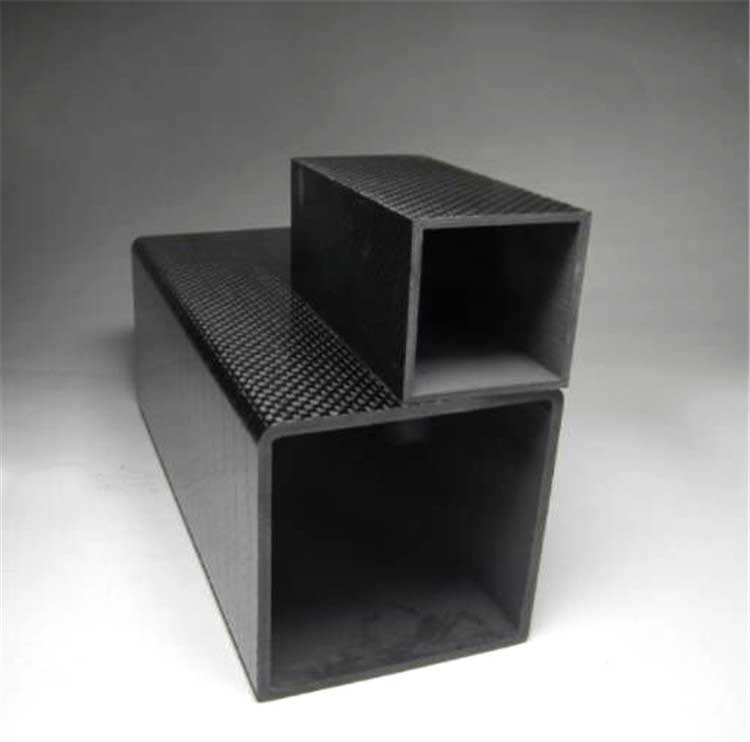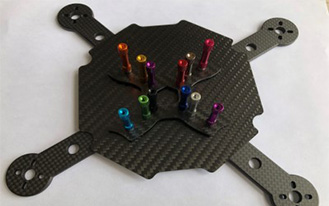Carbon fiber tubes are known for their advantages of lightweight and high strength. They can be used as alternatives to lots of products. What benefits do carbon fiber tubes offer? How to produce carbon fiber square tubes? In this article, we’ll focus on the manufacturing process of square carbon fiber tubes.
Benefits of Carbon Fiber Tubes
Carbon fiber tubes are ideal for applications that require lightweight products and reduce energy consumption.
- Low density and lightweight: the density of carbon fiber composites is low. Carbon fiber pipes are 60% lighter than steel pipes of the same size and 30% lighter than light aluminum alloy pipes. This advantage makes carbon fiber tubes widely used in aerospace and other products that need lightweight materials.
- Excellent impact resistance and fatigue resistance: carbon fiber products are impervious to external impact deformation. In addition, carbon fiber tubes, such as carbon fiber manipulators and carbon fiber rollers, have exceptional fatigue resistance. Carbon fiber can prevent permanent deformation during high-speed operation.
- Corrosion resistance and longer service life: metal pipes have high chemical activity and are generally easy to rust in the air. Carbon fiber pipes also have good corrosion resistance. They can maintain high stability in acid, alkali, and salt environments, and can be used for a long time to ensure safety and reduce the number of replacements.
- Good design flexibility: carbon fiber tubes are usually completed by winding, forming, and other processes. Some special designs, such as bending, bending angle, etc., can be completed by forming, with higher overall accuracy.

How to Produce Carbon Fiber Square Tubes - Carbon Fiber Tube Manufacturing Process
The manufacturing process of carbon fiber square tube roughly includes five steps:
1. Mold making
First of all, the mold is designed according to the square tube size required by the customer, including the tooling requirements after forming. In addition, a series of conditions of the carbon fiber square tube size should be considered, and the thickness of the reserved tolerance tube should be determined according to the need. In order to ensure dimensional accuracy, we should also pay attention to bending deformation. If the pipe size is large, we need to use high-strength steel mold.
2. Prepreg cutting
After the mold is designed, the carbon fiber prepreg needs to be cut according to the size, the unidirectional carbon fiber prepreg needs to be stacked at 0 and 90 degrees, and the laying method needs to be determined according to the stress of the carbon fiber products
3. Blank forming
After the prepreg and mold are completed, the prepreg shall be filled. Put the carbon fiber prepreg layer by layer on the mold, and compact the prepreg to ensure that the resin flows inside after mold closing. The closer the interior of carbon fiber products, the better the performance of finished products. When installing the mold, it is also necessary to apply a release agent to facilitate demoulding.
4. Heating and solidifying
After the mold is completed, put the carbon fiber blank on the hot press, and complete the curing of the carbon fiber square tube under the action of temperature and pressure. During the manufacturing process, it is necessary to pay attention to the changes in forming temperature and time parameters. The manufacture of carbon fiber square tubes is closely related to temperature, pressure, and time. After molding, pressure and heat preservation should be maintained.
5. Demoulding
The carbon fiber square tube is taken out by the demoulding equipment. After demoulding, it is taken out and put into the molding machine. After demoulding, the mold needs to be cleaned before repeating the above steps.

Pulished on Jun. 14, 2025

Pulished on Oct. 23, 2023